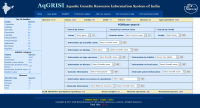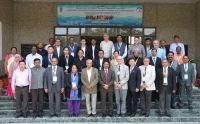The theme for Shrimp 2019 is "modelling for sustainability". The conference will be held from 12-14 November in Bangkok, Thailand. The conference will consider at length the present and future of the industry, focusing on moving towards sustainability. A large part of the sessions will be devoted to production and trade at the domestic and international levels, as well as the latest developments in the shrimp industry. Some 250 delegates, both international and local, representing various segments of the seafood industry, are expected to participate.
A regional proficiency testing workshop for aquatic animal health laboratories was held from 13-14 March in Bangkok, Thailand. The workshop is part of a programme to provide laboratories with the opportunity to assess their own diagnostic performance, and improve their practices. Eight rounds of proficiency testing will be carried out over a period of four years. 34 laboratories from thirteen countries in the region are participating in the programme. The programme is an initiative of the Australian Government.
AGRISI, a new information system on aquatic genetic resources of India, has been launched by the National Bureau of Fish Genetic Resources. AGRISI is a unique platform presently covering 3138 native fish species of India. The system provides information on systematics, biology, distribution, nutrition, nutrition, and other characteristics. AGRISI includes information on museum specimens, and accessions from different NBFGR repositories. These include data on germplasm, cell lines and links to other molecular resources developed under the National Agricultural Bioinformatics Grid such as the Fish Barcode Information System.
The ICAR-NACA School on Aquatic Epidemiology and Disease Surveillance was held at the ICAR National Bureau of Fish Genetic Resources (NBFGR) from 1-6 March. The school was a collaboration between the Indian Council of Agricultural Research and NACA. The school covered:
- Concepts and principles of epidemiology.
- Use of epidemiological principles in design and implementation of surveillance programmes.
- Sampling considerations for surveillance programmes.
- Population surveys.
- Estimation of sensitivity and specificity of diagnostic tests.
- Questionnaire design.
A Regional Expert Consultation on Genetically Responsible Aquaculture was convened by the ICAR National Bureau of Fish Genetic Resources and NACA, from 26-27 February. The immediate objective of the consultation was to discuss mechanisms for establishing quality seed production systems to improve hatchery and on-farm genetic diversity. A long-range objective is to establish networks of registered broodstock holdings. Linked via IT systems, such networks will form a virtual global aquaculture gene pool that can, collectively, sustain high genetic diversity and adaptive capacity, while checking inbreeding depression.



